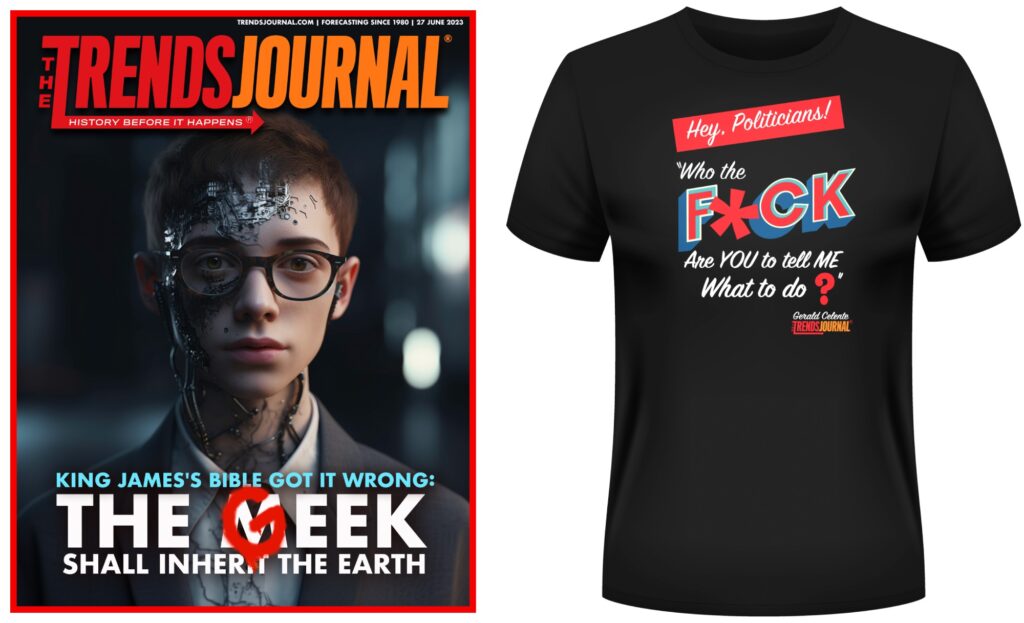The Forecast: While large-scale marketers and retailers will continue to capitalize on the need to look back by producing classic rock T-shirts and retro-looking radios for certain segments of the boomer-plus population, they’re missing enormous opportunity to push retrograde quality among younger generations. Mass-produced merchandise is the sugar coating; quality and genuineness, lovingly crafted from the heart, is the ticket.
On the commercial end of business and social side of life, down-and-out millennials and a stressed-out general public yearn for any port that provides emotional respite from the constant fear-and-hysteria storm that politicians promote and the media sell. They will be tapping in to a new cultural-profit trend with long-term potential.
Beyond the speakeasies that now dot city streets, swank, “natural,” calming, genteel and sophisticated night club/dinner and dance-club environments will attract a clientele spanning generations. Essentially, such spaces do not exist today.
Savvy marketers and entrepreneurs understand that by winning over leading-edge millennials, the rest will follow. Those in the fashion, art and entertainment worlds that respond to this trend early will set the stage and the tone for Retrograde 2.0 — retrofitting the best of the past to create the future with enhanced levels of quality that are 21st-century unique.
Update: There is an undercurrent of this trend line that will likely accelerate: As disturbing as it may be, retailers and marketers will increasingly find ways to cash in on the millennial generation’s relationship to fear. An analysis in this edition (p. 42) describes it this way: “Our largest generation fears reality, avoiding truth at any cost. It has seen school shootings and police shootings on 24-hour cable news. It has seen terrorist attacks. It has lived through hard economic times.”
Fear, as motivation for development of products and services that target this demographic, is an emerging trend line. Clearly, however, the “fear” component of Retrograde 2.0 illustrates an even greater market opportunity currently being overlooked. That opportunity exists untapped on the flip side of fear. Simply stated, the antidote to fear is the beauty and art that have transformed generations throughout history. The “gold” still is in “… retrofitting the best of the past to create the future with enhanced levels of quality that are 21st-century unique.”
Today, retail and service sectors create experiences that provide shared experiences. It’s an easy, obvious response to the fear factor millennials share. Make them comfortable, and they’ll come. But what about the shared space and interests among millennials that is motivated and inspired by a creative experience?
Those who identify this quality – understanding how creativity and emotional expressions are the antidote to fear – and mine it properly and creatively, will be on the front lines of launching the next big trend. Astute marketers will capitalize on this trend by appealing to millennials on higher aesthetic levels of beauty, creativity and quality. It has the potential to emerge as a mega trend in the years ahead.

 العربية
العربية 简体中文
简体中文 Nederlands
Nederlands English
English Français
Français Deutsch
Deutsch עִבְרִית
עִבְרִית Italiano
Italiano 日本語
日本語 한국어
한국어 Latin
Latin Polski
Polski Português
Português Русский
Русский Español
Español ไทย
ไทย Türkçe
Türkçe Українська
Українська Tiếng Việt
Tiếng Việt

